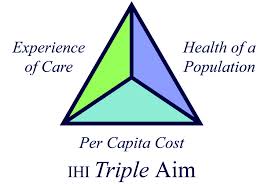FROM:
Dynamic Chiropractic ~ December 15, 2015
AND FROM: HuffPost ~ 11-19-2015 ~ FULL TEXT

|
Are you a thing or are you a human?
If someone wishes to assess your potential contributions to this life we live, what is the best starting assumption: thing or human?
The questions may seem silly. But a recent report from the RAND Corporation bores in on how regular medicine reduced complementary and alternative medicine professionals to "thing" status -- as "modalities" -- in the first years of the integrative medicine era.
The title of the report is Complementary and Alternative Medicine: Professions or Modalities?. The discussions among policy makers, practitioners and delivery system leaders synthesized in the 75-page document beg a more significant question: Does the emergence of values-based medicine urge a major re-think regarding the potential contributions of these professionals?
The case statement by RAND's Patricia Herman, ND, PhD and Ian Coulter, PhD begins with a blunt irony. "One of the hallmarks of complementary and alternative medicine (CAM) is treatment of the whole person." Yet in the fee-for-service procedure and production orientation of the medical industry, licensed practitioners of chiropractic, acupuncture and Oriental medicine, and naturopathic medicine were typically stripped of this core value -- treating the whole person -- before being put to any use.
Read More Now |
Chiropractic: Profession or Modality?
Dynamic Chiropractic – December 15, 2015
New RAND report examines the policy implications.
Is chiropractic a profession or a modality?
That's the thought-provoking question explored in a new RAND report that was funded by the
NCMIC Foundation.
“Complementary and Alternative Medicine: Professions or Modalities?” It focuses on
“a problem that confronts the complementary and alternative medicine (CAM) professions whereby a profession is defined politically not by its full professional scope but by its treatment modalities.”
Authored by Patricia Herman, ND, PhD, and Ian Coulter, PhD, the RAND report highlights chiropractic and four other major CAM disciplines: acupuncture and Oriental medicine, massage therapy and naturopathic medicine, examining how the “profession vs. modalities” issue affects “policy implications for coverage, licensure, scope of practice, institutional privileges, and research.”
The report is the culmination of a three-step process that began with the development of a background paper on policy issues impacting CAM scope of practice and utilization within the health care system. Steps two and three involved input from a panel of CAM experts and a panel of health care policy decision-makers, respectively.
Dr. Christine Goertz (Vice Chancellor of the Palmer Center for Chiropractic Research) and Dr. Robert Mootz (Associate Medical Director for Chiropractic at the Washington State Department of Labor and Industries) represented the chiropractic profession on the CAM experts panel, while Dr. David Elton, John Falardeau and Dr. Karl Kranz represented the profession on the policy decision-makers panel.
Based on input from the two panels, the report summarizes key issues to address moving forward:
Employers matter: “Both groups recognized that employers are a key group in shaping the future health care system. ... To support CAM and multimodal teams, employers will need a good business case. This care has to be shown to safe, effective and cost-effective.”
Education is critical: “Patients need to be educated about their options for health care and how to find CAM providers. Conventional providers need to be educated about CAM and CAM providers, and vice versa. ... CAM providers need to learn how to work with each other across professions.”
Can't we all just get along? “The various CAM professions also must learn to work together/collaboratively toward mutual goals.”
Legal and regulatory hurdles abound: “This project uncovered a number of barriers to the further incorporation of the CAM professions in federal and state laws and regulations.” Those barriers, as highlighted in the report, include:
Medicare and the Social Security Act;
hiring at the VA / DoD;
relative value units;
the Affordable Care Act's definition of “primary care”;
Congressional Budget Office scoring;
business relationship regulations;
and malpractice coverage.
In announcing the report's release, John Weeks, publisher / editor of The Integrator Blog and executive director of the Academic Consortium for Complementary and Alternative Health Care (ACCAHC), observed in his October 2015 Blog that the report raises several intriguing questions specific to the chiropractic profession:
"This report is particularly timely for chiropractors, for which the [NCMIC] Foundation's parent, NCMIC Group, is the main malpractice provider. Medicare is evaluating this precise question: Should chiropractors be respected and paid as professionals who evaluate and manage patients with skills and a legal scope of practice well-beyond spinal manipulation for low back pain? Or is it in the best interest of human health to continue to treat DCs only as rack-'em-and-crack-'em machines? What do you think is the best for health care?"
"Given the chiropractic-related input, I was intrigued to see the recommendation that 'CAM Professions Need to Work Together.' This will be tough to swallow for many of chiropractic's professional leaders who like to keep other 'CAM' professions at arms-length."
The entire RAND report, Complementary and Alternative Medicine: Professions or Modalities?
is available as a free PDF download on the RAND Corporation website or right here.















